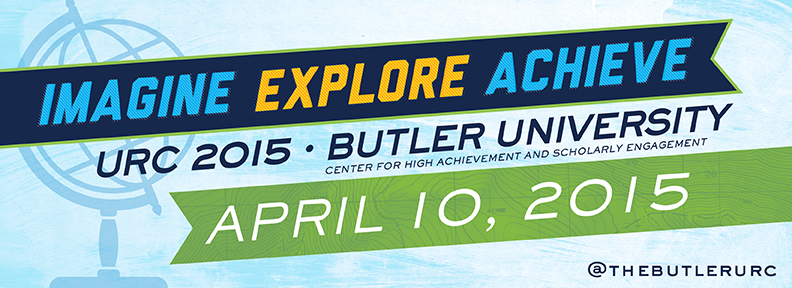
Communication & Media Studies
Event Title
Hollywood's Hindering of Homosexuality for Heroes: Sexuality in Comic Books and Their Movies
Document Type
Oral Presentation
Subject Area
Communication & Media Studies
Start Date
10-4-2015 9:45 AM
End Date
10-4-2015 10:45 AM
Sponsor
Kristin Swenson (Butler University)
Description
Due to the increased interest and popularity of comic book movies and their original counterparts, I found that this area of media had the potential for further cultural investigation. Scholars have noted the existence of sexuality in comic books and their movies (see Greyson (2007), McAllister (1992), and Peters (2003)). The three comic books and respective films I will examine are Green Lantern, X-Men, and Thor. All three comics had a film version released within the last four years. All three of these films, Green Lantern (2011), X-Men: First Class (2011), and Thor (2011), were within the top 25 grossing movies for the year ("2011 Domestic Grosses"). Each of these comic books has LGBT themes appear yet none of the movies hint at these themes. The movies are depoliticized of their comic book themes and more mainstreamed for a general audience. This analysis explores the depoliticization of the comics in their film versions. By examining these ideas, the popularity of these films and effects they have on society can be explored. A critical analysis will reveal which themes were left out, which were included, and which were included yet masked.
While sexuality in comic books is more varied by including LGBT characters, their movie counterparts ignore these non-heterosexual characters. By examining both comic books and the movies based off of them, I will demonstrate the limitations of discussions of sexuality and how these discussions or lack thereof affect society. While these highly popular films had the opportunity to make a statement about the LGBT community, these ideas were ignored.
Scholars noted queer themes and characters such as Mask and closet, or ˜under the hood': Metaphors and representations of homosexuality in American superhero comics after 1985 (Mandel, 2003), Queering super-manhood: The gay superhero in contemporary mainstream comic books (Lendrum, 2004), and Wonder women: Feminisms and superheroes (Robinson, 2004). But none have explored the recent representation or non-representation of queer characters and themes as they move from comic book to screen. Close textual reads of both the comic books and their movies will also be necessary to understand the context. I believe that these trends found in the articles will reveal that comic books talk about LGBT characters but also enforce hegemonic masculinity ideas as well as restricted roles of women. The progressive ideas are overshadowed by traditional functions of men and women in society. I argue that although the comic books represent LGBT themes, they also enforce hegemonic norms that get further emphasized on screen.
Hollywood's Hindering of Homosexuality for Heroes: Sexuality in Comic Books and Their Movies
Due to the increased interest and popularity of comic book movies and their original counterparts, I found that this area of media had the potential for further cultural investigation. Scholars have noted the existence of sexuality in comic books and their movies (see Greyson (2007), McAllister (1992), and Peters (2003)). The three comic books and respective films I will examine are Green Lantern, X-Men, and Thor. All three comics had a film version released within the last four years. All three of these films, Green Lantern (2011), X-Men: First Class (2011), and Thor (2011), were within the top 25 grossing movies for the year ("2011 Domestic Grosses"). Each of these comic books has LGBT themes appear yet none of the movies hint at these themes. The movies are depoliticized of their comic book themes and more mainstreamed for a general audience. This analysis explores the depoliticization of the comics in their film versions. By examining these ideas, the popularity of these films and effects they have on society can be explored. A critical analysis will reveal which themes were left out, which were included, and which were included yet masked.
While sexuality in comic books is more varied by including LGBT characters, their movie counterparts ignore these non-heterosexual characters. By examining both comic books and the movies based off of them, I will demonstrate the limitations of discussions of sexuality and how these discussions or lack thereof affect society. While these highly popular films had the opportunity to make a statement about the LGBT community, these ideas were ignored.
Scholars noted queer themes and characters such as Mask and closet, or ˜under the hood': Metaphors and representations of homosexuality in American superhero comics after 1985 (Mandel, 2003), Queering super-manhood: The gay superhero in contemporary mainstream comic books (Lendrum, 2004), and Wonder women: Feminisms and superheroes (Robinson, 2004). But none have explored the recent representation or non-representation of queer characters and themes as they move from comic book to screen. Close textual reads of both the comic books and their movies will also be necessary to understand the context. I believe that these trends found in the articles will reveal that comic books talk about LGBT characters but also enforce hegemonic masculinity ideas as well as restricted roles of women. The progressive ideas are overshadowed by traditional functions of men and women in society. I argue that although the comic books represent LGBT themes, they also enforce hegemonic norms that get further emphasized on screen.
